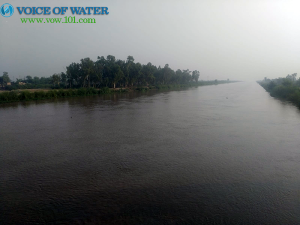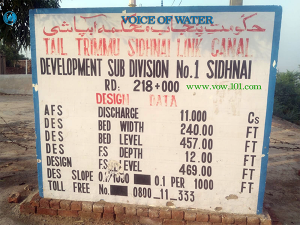Groundwater Falls Significantly in 14 Canals of Punjab Province of Pakistan: Reports ADB
Pakistan’s food powerhouse, the Punjab province, faces severe water stress

ISLAMABAD: Pakistan’s food powerhouse, the Punjab province, faces severe water stress as groundwater in 14 water canals, out of 25, has fallen significantly from 2007 to 2019, report 14 water canals, states a research study conducted by the Asian Development Bank (ADB) titled “Determining Sustainability of Groundwater Use in Punjab’s Irrigation Canal Commands”.
In addition, the lowest P values of the trendline for Chashma Right Bank Canal (CBDC) (P=0.0001) and Lower Bari Doab Canal (LDC) Lahore (P=0.0000) informs that the decline in these canal commands is steady over the years. Most of the canal commands where groundwater levels are falling are in the eastern part of Punjab, where the river flow is negligible following the Indus Waters Treaty.

Despite the water transfers from the western rivers, long stretches of the rivers do not transfer water most of the year, and hence there’s no opportunity for them to contribute to recharge. The decline is severe in LPC Multan at 0.35 m per annum. The rate of decrease is lowest in the Saddiqia canal command at 0.04 m per annum.
Eight of the 25 canal commands do not experience a significant change in groundwater levels. Annual changes are -0.03m and 0.04m. Groundwater use patterns in these canal commands may be considered sustainable.
An analysis of data collected at 846 piezometers across 25 canal commands of Punjab between 2007 and 2019 has been carried out to determine groundwater use sustainability. Noting that groundwater is used throughout the year, but significant recharge occurs during monsoon, post monsoon groundwater levels were analysed to evaluate whether they recover fully during monsoon.
Annual average groundwater level values for a period 2007 until 2019 for each canal command were estimated and regressed against time. The slope of the regression line was tested to determine if it is statistically significant. Results showed that groundwater levels are declining significantly in 14 of the 25 canal commands. Decline rates are the steadiest at CBDC, and LDC Lahore canal commands.
Most of the canal commands where groundwater levels are falling are in the eastern part of Punjab, where the river flow is negligible following the Indus Water Treaty. The decline rate is severe in LPC Multan at 0.35 m per annum; and mild in Saddiqia at 0.04 m per annum.
A probable reason for mild decline at Saddiqia canal command may be attributed to marginal groundwater quality. The regression line slope was multiplied by an effective specific yield and the area to estimate net recharge to groundwater in each canal command. A net decline of 0.77 BCM was calculated for all canal commands in the Province. Additional analyses were carried out to determine hotspots within canal commands where groundwater levels are declining.
Two levels of threshold values are estimated, the first at p < 0.1 and the second at p < 0.05. Groundwater extraction between the thresholds needs to be reduced to prevent unsustainable use in such locales. In areas where groundwater decline is more than the threshold for p < 0.05, rectification measures such as managed aquifer recharge needs to be initiated.







